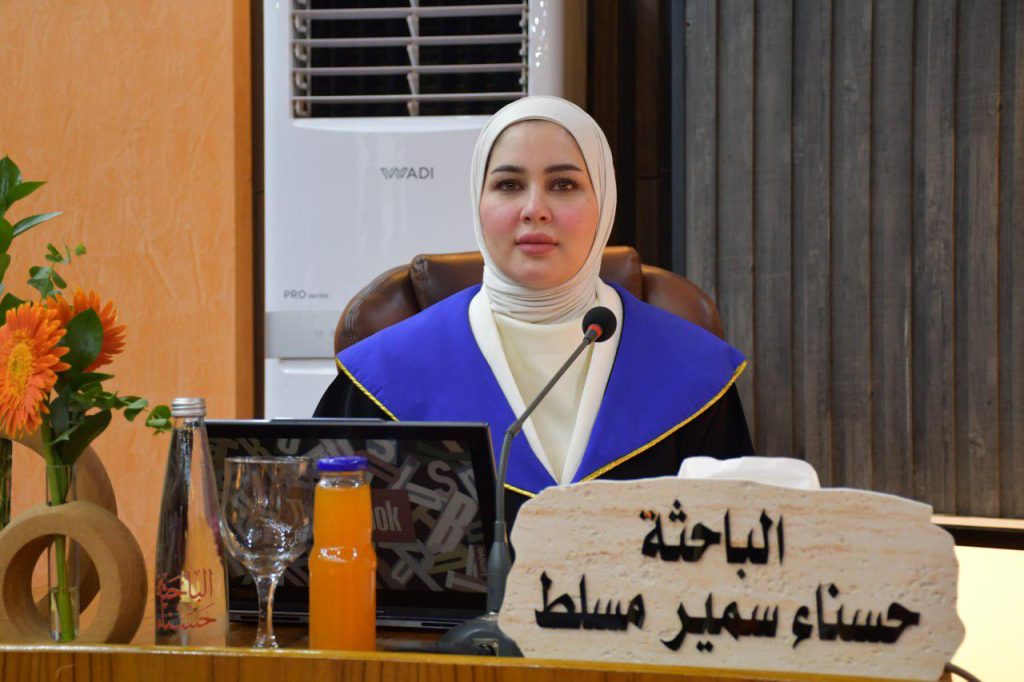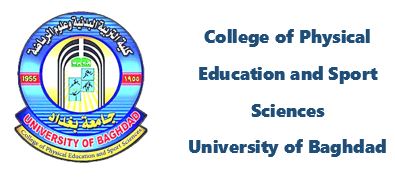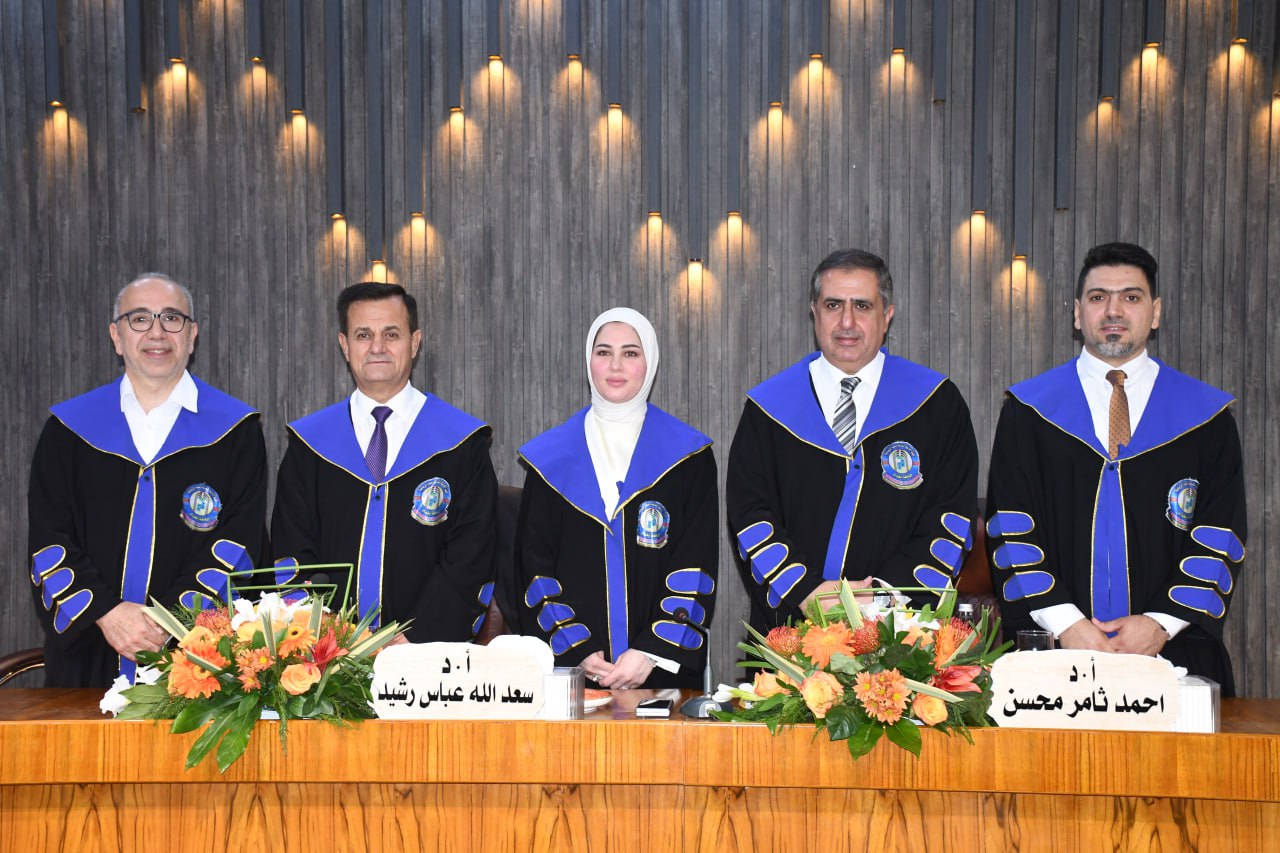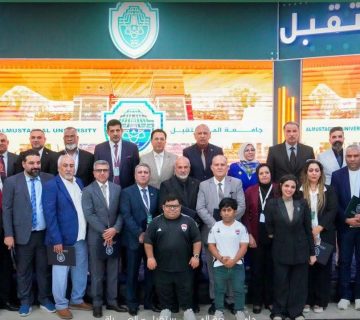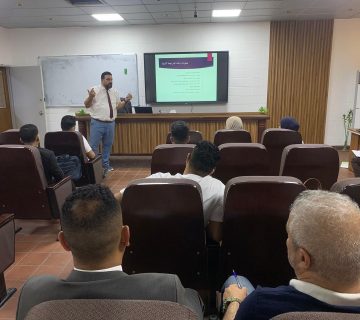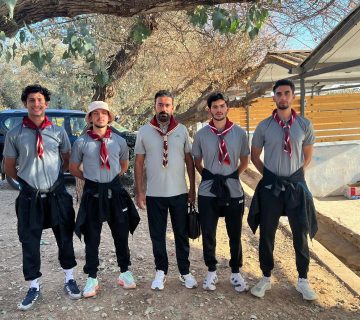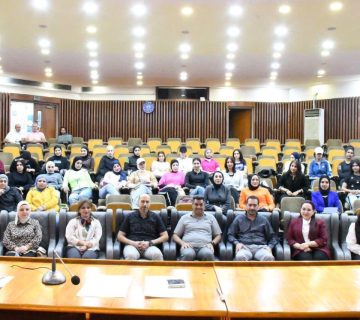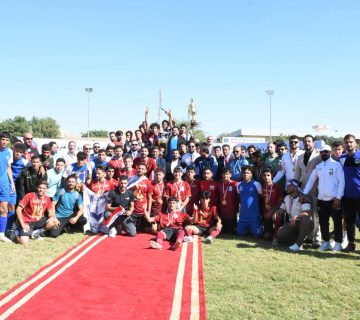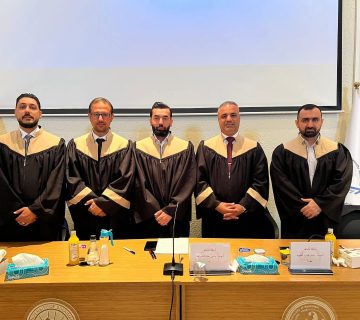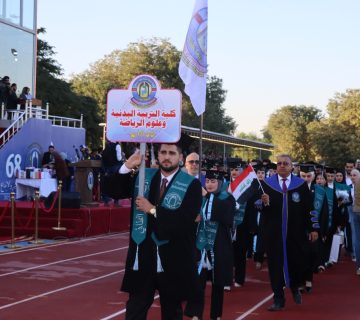A Master’s thesis was discussed at the College of Physical Education and Sport Sciences, University of Baghdad, by student Hasnaa Sameer Maslat, entitled:
“Analysis of Selected Biomechanical Variables Using the Intelligent H.Y System and Their Contribution Ratio in Evaluating the Lunge Skill in Youth Fencing.”
The examination committee consisted of:
•Prof. Dr. Ahmed Thamer Mohsen – Chair
•Prof. Dr. Saadallah Abbas Rasheed – Member
•Asst. Prof. Dr. Sajad Abdulwahid Abdulkhaleq – Member
•Prof. Dr. Yasser Najah Hussein – Member and Supervisor
The importance of this study lies in integrating smart technologies and artificial intelligence into the evaluation and development of young fencers’ performance, representing a significant step toward modernizing training approaches. The researcher employed a descriptive analytical method on a sample of youth athletes from the Iraqi Fencing Federation training center, utilizing video motion analysis tools, film-based techniques, and the AI-based H.Y system, which operates on the Windows platform.
The thesis aimed to design and employ the H.Y intelligent system for analyzing the lunge skill in fencing by measuring biomechanical variables, assessing their impact on performance, and identifying their correlation with the quality of execution—ultimately providing a comprehensive digital evaluation of athletes’ technique.
The study concluded that merging AI with sports training significantly enhances skill development and performance analysis. Data-driven training leads to more accurate and faster results, and the H.Y system proved to be an effective tool for evaluating and improving the lunge movement in fencing.
Key recommendations included generalizing the use of the H.Y system in fencing training centers, adopting biomechanical metrics as a foundation for performance assessment, and further developing smart systems to expand into other sports disciplines.
This research contributes to several Sustainable Development Goals, especially:
•Goal 4: Quality Education, by incorporating digital tools and smart systems into sports science and coaching,
•Goal 9: Industry, Innovation, and Infrastructure, through the development and implementation of intelligent technologies in athletic performance,
•Goal 3: Good Health and Well-being, by enhancing athletic training systems based on evidence and scientific analysis.
